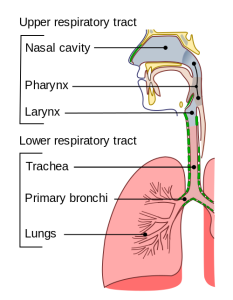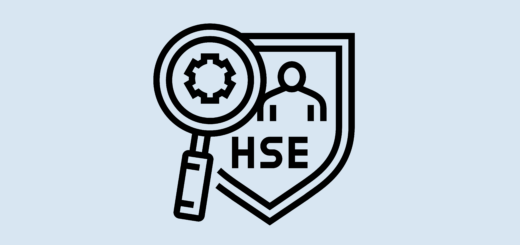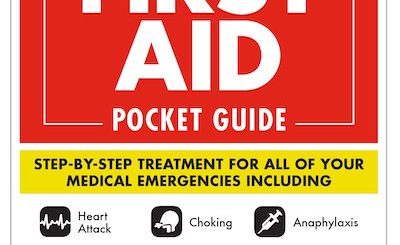Anatomy for first aiders: the respiratory system
The respiratory system can be divided into two sections: upper and lower.
The upper respiratory system includes the nostrils, nasal cavity, mouth, pharynx (throat) and larynx (voice box).
The throat is a common passageway for food and air. It starts from the cavity at the back of the mouth and nose and extends to where it divides into two separate tubes, the trachea and the oesophagus.
The trachea (windpipe), allows air to pass to and from the lungs. It is in the front of the throat and begins at the larynx and vocal cords, extending down to the lungs. The oesophagus is behind the trachea and carries food and liquids to the stomach (or back from the stomach to the throat during vomiting or regurgitation).
The lower respiratory system consists of the trachea and the bronchi, which divide into two to enter the right and left lungs. The two bronchi then divide into progressively smaller bronchi, bronchioles and, finally, alveoli (terminal air sacs).
The trachea and bronchi are kept open by C-shaped rings of strong connective tissue (cartilage), making them semi-rigid tubes. These rings hold the trachea and bronchi open, allowing air flow to and from the lungs.
The lungs fill most of the chest cavity, which is separated from the abdomen by a large sheet of muscle, the diaphragm. The lungs are spongy, elastic organs consisting of the bronchial tree, alveoli and blood vessels.
When we breathe in, air containing oxygen moves into the lungs down to the alveoli. The alveoli are surrounded by tiny blood vessels (capillaries). The interface between those two structures is known as the respiratory membrane, and it allows the exchange (diffusion) of gases.
Oxygen diffuses from the alveoli into the blood in the capillaries, while carbon dioxide diffuses from the blood to the alveoli. Carbon dioxide is a waste product of metabolism (burning of the body’s energy systems) and is expelled as we breathe out.
Breathing
Breathing (respiration) is the act of moving air into and out of the lungs.
Inhalation is the breath in. It is an involuntary muscular action caused by contraction of the muscles that lifts the ribs while the diaphragm is pulled down and flattened. This combined action increases the size of the chest cavity and sucks air into the lungs.
Exhalation is the breath out. When the muscles of inspiration relax, the elastic recoil of the lung tissues pushes air out of the lungs.
The air we breathe in contains approximately 21% oxygen. About 5% of this is used in the body, so the air we breathe out contains 16% oxygen.
On average, an adult takes 12-20 breaths per minute. The average amount of air taken in one breath is about half a litre, and is called the tidal volume. In children and infants, the breathing rate is faster and the tidal volume is smaller.
The breathing control centre is located at the base of the brain in the brainstem. It acts like a metronome (timing mechanism), sending out regular impulses that control the rate and depth of breathing (both inspiration and expiration). The breathing control centre must have a good supply of oxygen, otherwise it will become damaged, fail to function properly and breathing will stop.






